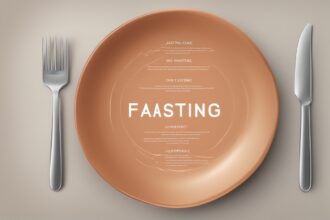Welcome to the world of fasting, a practice that’s been around for centuries but has recently gained massive attention for its potential health benefits. Whether you’re looking to improve your metabolism, shed a few pounds, or simply reset your relationship with food, understanding the types of fasting can help you choose the right approach for your lifestyle. Fasting isn’t just about skipping meals; it’s a structured way to give your body a break while tapping into some pretty incredible physiological processes. In this comprehensive guide, I’ll walk you through the most popular fasting methods, sprinkle in some science-backed insights, and share practical tips to help you get started safely. Let’s dive into the fascinating world of fasting protocols and explore how they might just transform your health!
What Is Fasting and Why Does It Matter?
Fasting, at its core, is the voluntary abstinence from food and, sometimes, drink for a specific period. It’s been practiced across cultures and religions for spiritual, mental, and physical reasons. Today, science is catching up with tradition, showing that fasting can trigger processes like autophagy—where cells clean out damaged components—and improve insulin sensitivity (Mattson et al., 2017). But not all fasting is the same. Different types of fasting offer unique benefits and challenges, depending on your goals, whether it’s weight loss, mental clarity, or longevity. Understanding these variations is key to picking a method that aligns with your needs without feeling like a chore. So, what are the main fasting styles out there? Let’s break them down.
Intermittent Fasting: The Most Popular Approach
If you’ve heard of fasting, chances are you’ve come across intermittent fasting (IF). This isn’t a single method but an umbrella term for several eating patterns that cycle between periods of eating and fasting. The beauty of IF is its flexibility, making it one of the most accessible types of fasting for beginners. Research suggests that IF can help with weight management and reduce markers of inflammation (Patterson & Sears, 2017). Common IF protocols include the 16/8 method (fast for 16 hours, eat during an 8-hour window) and the 5:2 diet (eat normally for 5 days, restrict calories to 500-600 on 2 non-consecutive days). I’ve tried the 16/8 myself, and it’s surprising how quickly your body adapts to skipping breakfast if you ease into it. Start by pushing your first meal back by an hour each day until you hit that 16-hour mark.
- 16/8 Method: Fast for 16 hours daily, eat within an 8-hour window (e.g., noon to 8 PM).
- 5:2 Diet: Eat normally for 5 days, limit calories to 500-600 on 2 days per week.
- Eat-Stop-Eat: Do a full 24-hour fast once or twice a week, then resume normal eating.
- Alternate-Day Fasting: Alternate between normal eating days and very low-calorie days (around 500 calories).
Prolonged Fasting: Going Deeper for Bigger Benefits
For those ready to take fasting to the next level, prolonged fasting
Water Fasting: The Ultimate Reset
Among the various types of fasting, water fasting is perhaps the most intense. As the name suggests, you consume only water—no food, no calorie-containing drinks—for a set period, typically 24-72 hours, though some extend it longer with medical guidance. Studies indicate that water fasting may promote autophagy and improve blood pressure in some individuals (Horne et al., 2013). However, it’s not for everyone. I remember my first 24-hour water fast; the first few hours were tough with hunger pangs, but by the end, I felt a strange sense of clarity. That said, it’s crucial to prepare your body by eating nutrient-dense foods beforehand and breaking the fast gently with light meals like broth or fruit. Always prioritize safety over ambition with this one.
Religious and Cultural Fasting: Tradition Meets Health
Fasting isn’t just a modern health trend; it’s deeply rooted in spiritual and cultural practices worldwide. Think of Ramadan in Islam, where individuals fast from dawn to sunset for a month, or Lent in Christianity, which often involves partial fasting or giving up specific foods. These fasting methods often combine physical restraint with mental discipline, offering benefits beyond the body. Research shows that Ramadan-style fasting can improve lipid profiles and blood sugar levels in healthy individuals (Adlouni et al., 1997). If you’re fasting for religious reasons, balance is key—don’t overeat during non-fasting hours, and focus on hydration when permitted. These practices remind us that fasting is as much about mindfulness as it is about physiology.
Time-Restricted Eating: A Gentler Start
If the idea of skipping entire days of food feels daunting, time-restricted eating (TRE) might be your gateway into the world of fasting. A subset of intermittent fasting, TRE limits your daily eating window—often to 6-10 hours—without necessarily cutting calories. Think of it as syncing your meals with your body’s natural circadian rhythm. Early studies suggest TRE can support weight loss and improve metabolic health by aligning food intake with peak digestive efficiency (Wilkinson et al., 2020). Personally, I find TRE the easiest to sustain long-term; I just stop eating after 7 PM and don’t start again until 9 or 10 AM. It’s less about restriction and more about timing. Here are some quick tips to make TRE work for you:
- Set a consistent window: Pick an eating window that fits your schedule, like 10 AM to 6 PM.
- Avoid late-night snacking: Eating close to bedtime can disrupt sleep and metabolism.
- Focus on nutrient density: Pack your meals with protein, veggies, and healthy fats to stay full.
Whether you’re drawn to TRE or one of the more intense fasting techniques, the key is to listen to your body. Not every method suits every person, and that’s okay. Experiment with different approaches, start small, and build up as you gain confidence. Remember, fasting isn’t a one-size-fits-all solution—it’s a tool, and how you wield it matters.
Conclusion: Finding Your Fasting Fit
Exploring the various types of fasting opens up a world of possibilities for enhancing your health and well-being. From the flexibility of intermittent fasting to the intensity of water fasting, or the cultural depth of religious fasts, there’s a method out there for nearly everyone. The science behind fasting is promising—showing benefits like improved metabolic health, cellular repair, and even mental clarity—but it’s not without risks if done improperly. My advice? Start with something manageable like time-restricted eating, track how your body responds, and always consult a professional if you’re unsure or have medical conditions. Fasting is a personal journey, and finding the right approach can be a game-changer. So, which of these fasting styles are you eager to try? Drop your thoughts or experiences below—I’d love to hear how fasting has worked for you!
References
- Adlouni, A., Ghalim, N., Benslimane, A., Lecerf, J. M., & Saile, R. (1997). Fasting during Ramadan induces a marked increase in high-density lipoprotein cholesterol and decrease in low-density lipoprotein cholesterol. Annals of Nutrition and Metabolism, 41(4), 242-249.
- Cahill, G. F. (2006). Fuel metabolism in starvation. Annual Review of Nutrition, 26, 1-22.
- Horne, B. D., Muhlestein, J. B., & Anderson, J. L. (2013). Health effects of intermittent fasting: Hormesis or harm? A systematic review. The American Journal of Clinical Nutrition, 102(2), 464-470.
- Longo, V. D., & Mattson, M. P. (2014). Fasting: Molecular mechanisms and clinical applications. Cell Metabolism, 19(2), 181-192.
- Mattson, M. P., Longo, V. D., & Harvie, M. (2017). Impact of intermittent fasting on health and disease processes. Ageing Research Reviews, 39, 46-58.
- Patterson, R. E., & Sears, D. D. (2017). Metabolic effects of intermittent fasting. Annual Review of Nutrition, 37, 371-393.
- Wilkinson, M. J., Manoogian, E. N. C., Zadourian, A., Lo, H., Fakhouri, S., Shoghi, A., … & Panda, S. (2020). Ten-hour time-restricted eating reduces weight, blood pressure, and atherogenic lipids in patients with metabolic syndrome. Cell Metabolism, 31(1), 92-104.






